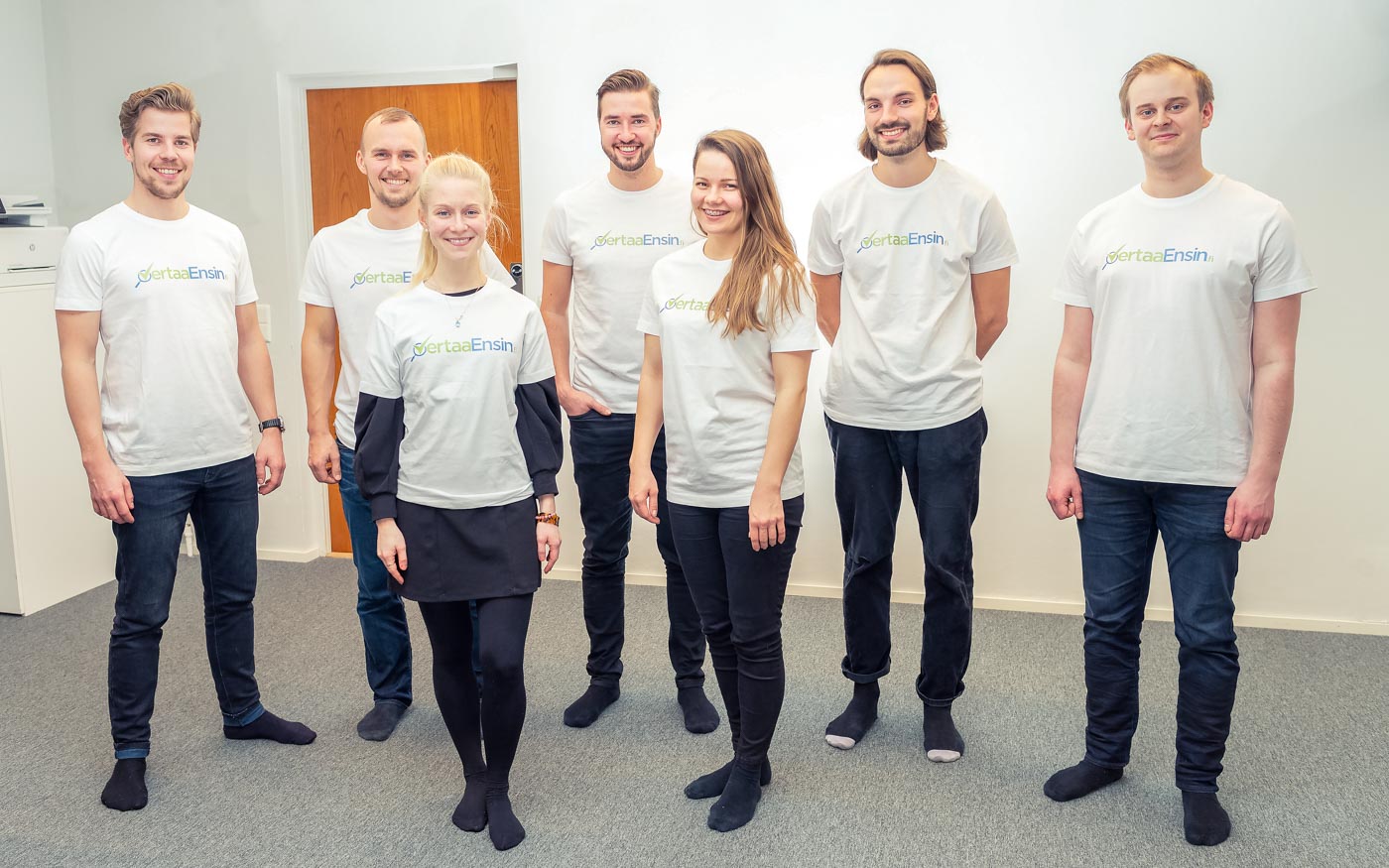Jussi Valsta, the CEO of VertaaEnsin.fi, a financial product information and comparison platform, which is part of CompareEuropeGroup, shares his views on how the platform and data economy changes the business environment and the dynamics between financial services industry players.
The Ross Republic digital banking interviews showcase the work and ideas of financial services innovators in Europe. We aim to represent a diverse set of interviewees and viewpoints and to provide actionable insights into strategy development, industry foresight and tangible use cases.
For this interview, we were joined by Jussi Valsta, the CEO of VertaaEnsin.fi, a financial product information and comparison platform. Their mission is to make personal finance simple and help consumers make better financial decisions. The company was recently listed by Sifted as one of the Top European fintech start-ups to follow in 2020.
Jussi, thanks for taking part in our interview series. Can you first describe the key benefits of financial product information and comparison platforms to banks and end-customers?
Sure, let’s start with the end-customers. Technology and open data enable banks to offer personalised experiences. From the perspective of an end-customer, we are the new, impartial service provider that allows customers to find a financial product that matches their values and focuses on meeting their specific needs. We represent freedom of choice in a market that traditionally was a non-broker market where customers were loyal to their chosen bank partner. Our user data shows that all the more customers embrace the unbundling of financial services and make important decisions also outside the sphere of traditional banks.
Concerning the banks, we are a potential partner in markets where the value chain is digitalised as well as commoditized and the barriers of entry have been removed. For instance, the Finnish mortgage market is currently undergoing this process due to the automatization of credit scoring and digitalization of share certificates.
We offer a new marketing channel for the banks that are either digital natives or adjusting their business and processes to the digital environment. We are the additional channel for banks to reach their target segments and match the profiles of prospects with their products. The banks that have the culture and capabilities to benefit from our service the most are digital challenger brands with a clear customer, product and channel strategy, and smaller traditional banks with strong focus on digitising their business and lower burden of legacy systems.
What is your view on PSD2 and the new Data Strategy for the EU Single Market by the EU Commission?
The current EU legislation brings all the banks to the 2000s in which the most successful companies operate with open APIs to create differentiating customer value and run the business efficiently. The new initiatives should make sure that European banks have a chance to compete against the big tech giants that are now entering the financial services market.
So far, the discussion around PSD2 has been mainly regulation and technology-driven, and the most crucial aspect, offering better products, services and experiences for the customer, has been almost non-existent. The discussion is also often threat-driven, and the actions seem to be on the defensive side. The PSD2 discussion should be about uncovering new value that would enable banks to strengthen the relationship with their customers; about new commercial opportunities.
In practical terms, what does PSD2 mean for financial product information and comparison platforms?
To begin with, we can now utilise APIs built and maintained by third parties instead of building them ourselves. PSD2 enables us to focus our resources on innovation and new value creation.
Secondly, PSD2 enables us to deliver better customer experiences as well as increase process efficiency. We are one step closer to one of our experience goals, one-click application process, as we should have all the relevant customer information automatically available very soon. The application process should become more pleasant to the customer as her credit rating, and creditworthiness can be evaluated earlier in the process. To go through a non-PSD2 process, filling in all the data yourself and at the very end, receiving an unfavourable decision, is not a pleasant experience. Finally, credit decisions will be more accurate. Data scoring models will evolve due to new data sets, such as real-time analysis of payment behaviour. With more granular data, we can offer the customer products that not only roughly match, but are tailored to her specific situation. Still today, one size fits all is the standard marketing and matching method.
Thirdly, PSD2 will help people to manage their finances better, yet this is a market that takes time to pick-up.
Indeed, personal finance management services are much hyped, but the expectations have so far fallen flat. Why is that in your opinion?
The basic account aggregation and presenting data in a visual form creates very little added value to a customer. In this basic form, the aggregation and the data visualisation, supported by DIY budgeting tools, add value only to a persona archetype called do-it-yourself optimiser, which is a small segment. Only very few people enjoy comparing the features and prices of immaterial, often hard to understand products.
Secondly, based on our user data, we have learned that people often value other things over the lowest price. When it comes to lending, the time to access the money is, for many, the most critical factor. Therefore, we believe that saving money is not alone powerful enough value proposition. A layer of gamification must be added on top of it. We must simultaneously suggest alternative ways to spend the potential saving. Alternatively, we might propose a greener, more expensive option, if sustainability plays a vital role in consumption habits of a user, and suggest that the needed extra money be funded by changing certain daily habits. Finally, the service must be fully automated to become a mass-market product.
I am convinced that there is a market for a service that optimises the money the customer spends on specific services and provides her with options to use the identified savings to improve her quality of life.
Who will win this new market? New players or traditional banks?
People search for information independently, and financial services are no exception. We believe that winning in the early stages of the customer journey and being an impartial source of information are critical. Therefore, to build a trusted relationship, we want to be the top-of-mind digital brand for impartial information and dominate in relevant keywords.
A new value network in which different players have different roles will emerge, and banks definitively have a pivotal role to play.
Generally speaking, banks are neither content marketing specialists nor neutral. Moreover, platforms should have a more comprehensive offering than an individual bank. We believe that new digital players are better positioned to win the personal finance management market. I am not saying banks are losers; they just will not own the whole value chain anymore as they used to. A new value network in which different players have different roles will emerge, and banks definitively have a pivotal role to play.
What is the future role of the banks?
In my view, it is to offer great products, services and experiences. As we speak, a paradigm shift in the way banks distribute financial products and customers buy them is happening. The notion where, for instance, Nordea’s mortgage product is sold only in Nordea’s channels is outdated thinking. We believe that banks should learn to think and act like the airline industry. Their business model and marketing operations are built to add value after the first sales by a third party like ebookers. The airlines are masters at building a relationship after the first sales and making money with ancillary sales.
The paradigm shift comes with implications. First, banks need to make hard strategic choices about their target customer, their product portfolio and business model and then differentiate the brand accordingly. Secondly, they need to start creating on-brand products that meet the needs of their target segments and learn to distribute them also via third party channels. Thirdly, they need to focus on on-boarding the customers properly and manage the customer relationships better over their lifetime to prevent customers running only for the cheapest prices. This will, as a result, also maximise their revenue per user and customer lifecycle value.
Thank you, Jussi, for the interview!
About VertaaEnsin.fi
VertaaEnsin.fi is the leading financial product information and comparison platform in Finland. We help consumers make better financial decisions through our curated and informative content and helpful tools to apply, compare and select best financial products. Currently, we help users to pick best products in categories such as Banking (Credit cards, Consumer loans, Savings and Investment accounts, Banking services), Telco (Mobile subscriptions) and Energy (Electricity). We will soon expand our services also to Home loans and Insurance products. The company is backed by e.g. Nova Founders, ACE & Company, Peter Thiel. We were chosen by Sifted (Financial Times) as one of the Top European Fintechs to follow in 2020.

About the author


